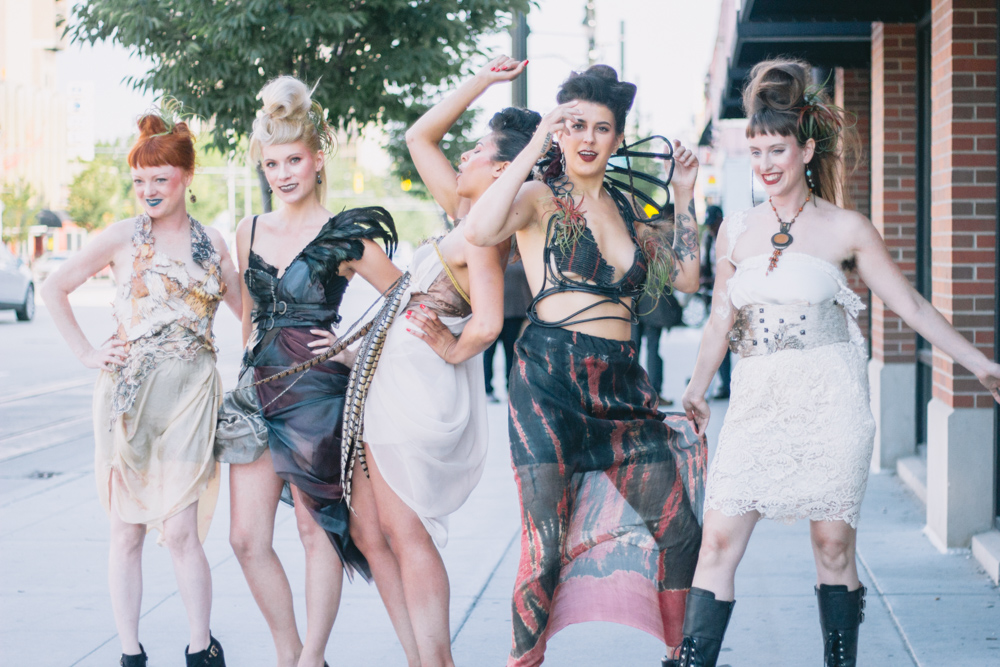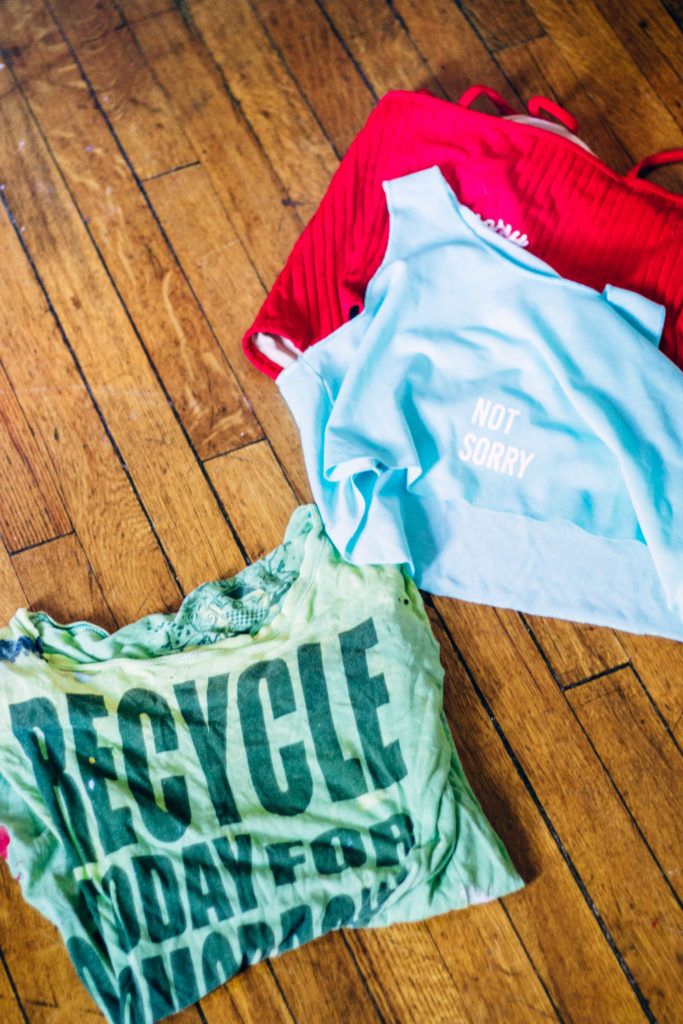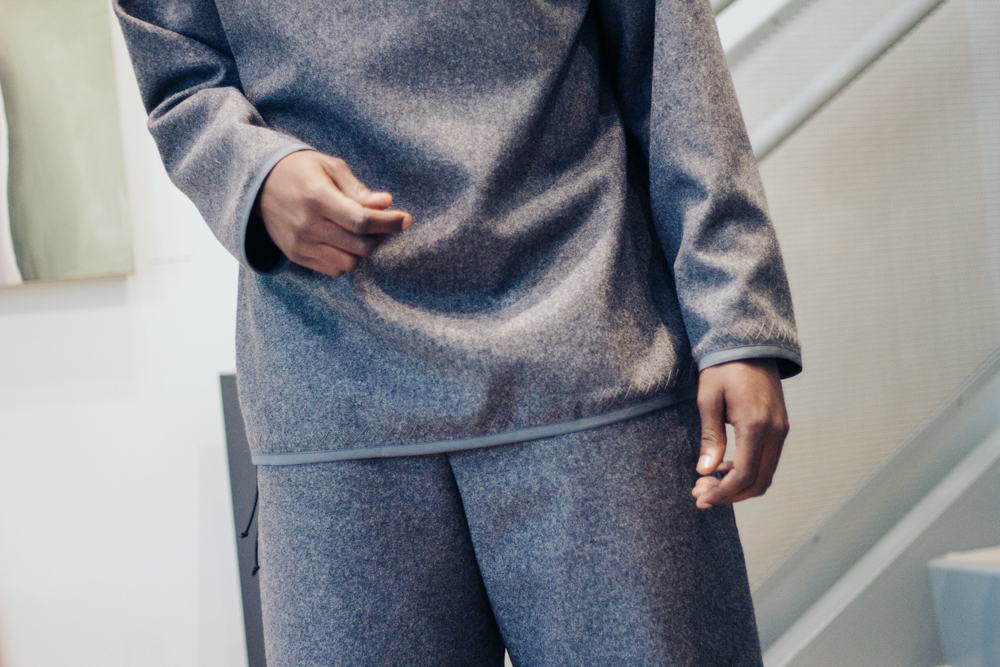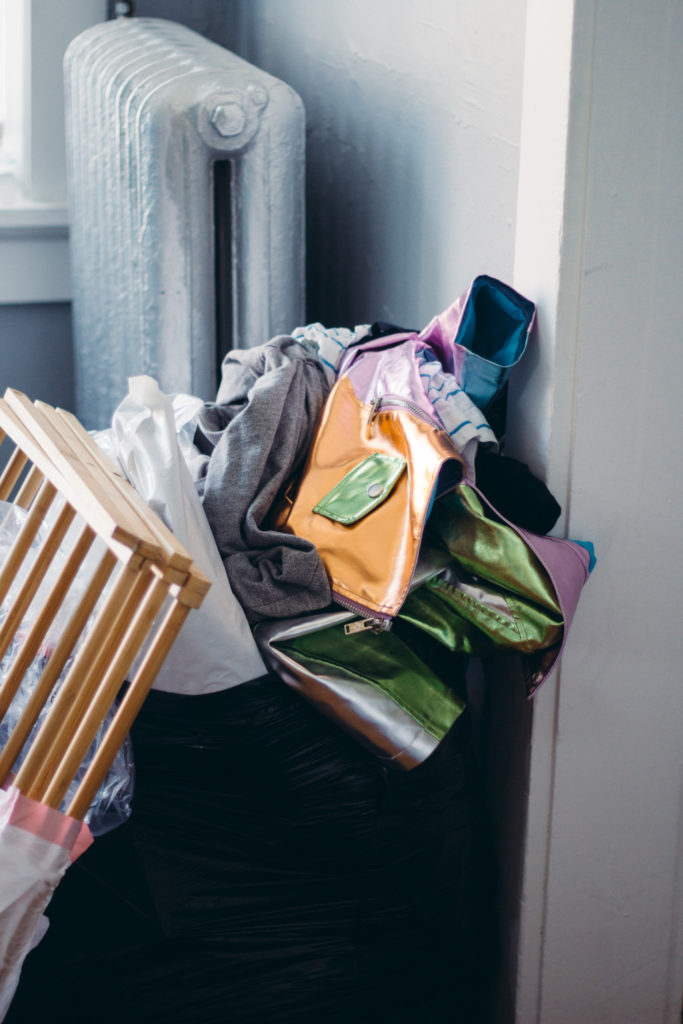That new Forever 21 haul might look great on you, but it definitely does not look great on the earth. The fashion industry is the second biggest pollutant on the planet. From production to post-consumer, the process of fast fashion needs as much of an update change as a winter to summer wardrobe—it takes 18,000 gallons of water just to grow the cotton for a pair of jeans, and about 400 gallons for a single cotton T-shirt.
According to Newsweek, “The EPA estimates that diverting all of those often-toxic trashed textiles into a recycling program would be the environmental equivalent of taking 7.3 million cars and their carbon dioxide emissions off the road.”
Yep, definitely not looking good.
So, you might ask, how does one keep a rad, on-trend wardrobe while reducing global warming?

Last week, I attended a panel in Detroit on sustainable fashion, hosted by local designers, clothing-conscious store owners, pattern makers, and buyers. Here was some advice they gave for making green the new black:

1—Quality over quantity. Have a few well-made pieces that will last rather than buying fast-made trend pieces that get thrown away season to season; curate your closet with key, quality pieces.

2—Look for transparency. Good sustainable brands show working conditions and the cost to create, such as Reformation (carrying clothing at good prices, upcyclying, and listing what resources went into their products) and Matt and Nat (vegan “leather” goods).

3—Thrifting is your friend! Mom jeans super-ultra in style right now? Instead of buying new, why not stop in at your local resale or goodwill and search for an authentic vintage pair?

4—Reduce, reuse, recycle, rewear. When it comes recycling fabric, due to a lot of the chemicals that go into processing clothing, most used or deadstock clothes end up in landfills. However, it’s not all wasted—the fashion panel I attended featured designers who up-cycled car interior leather, automotive metal, ex-TV cabling, and even furniture covering and old blankets…and made them totally wearable.

5—Take up knitting. Not only is it therapeutic, it’s a zero-waste way of making accessories and garments from a single “thread.”

6—Spread the word. A major issue with fashion sustainability is awareness. Tell others, thrift and share your stores, check out and share websites like Not Just A Label. It is totally possible without breaking the bank or wearing the same T-shirt for the rest of your life to work a little more “green” in your everyday style.

In the words of Phillip Picardi of Teen Vogue, “To tell a teenager that she should stick to lip gloss—when she’s being directly impacted by the policies, and they’re directly affecting her lifestyle and the lifestyle of those around her—is frankly irresponsible […] young women […] should have a firm opinion of what’s going on.” This quote applies to all Fashionistas/os and general clothing consumers; It shouldn’t just be about “who” you’re wearing anymore, but “what” you’re wearing.

How do you incorporate going green in your everyday looks? Tell us and tag @CFashionista!

